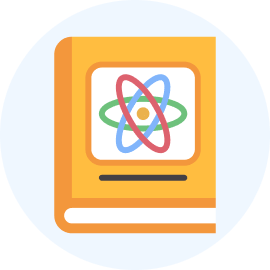GATE Physics Exam > GATE Physics Videos > Quantum Mechanics for GATE > Lecture 6: Tools of Quantum Mechanics
Lecture 6: Tools of Quantum Mechanics Video Lecture | Quantum Mechanics for GATE - GATE Physics
FAQs on Lecture 6: Tools of Quantum Mechanics Video Lecture - Quantum Mechanics for GATE - GATE Physics
| 1. What are the fundamental principles of quantum mechanics? |  |
Ans. Quantum mechanics is based on principles such as superposition, entanglement, and uncertainty. Superposition states that a particle can exist in multiple states simultaneously until it is measured. Entanglement refers to the correlation between particles that can remain even when separated by large distances. Uncertainty principle states that it is impossible to simultaneously know the exact position and momentum of a particle.
| 2. How does quantum mechanics explain the behavior of particles at the atomic and subatomic levels? |  |
Ans. Quantum mechanics provides a framework to understand the behavior of particles at the atomic and subatomic levels by describing them as wave functions. These wave functions represent the probability of finding a particle in a particular state. The wave-particle duality concept in quantum mechanics explains how particles can exhibit both wave-like and particle-like properties.
| 3. What is the significance of quantum mechanics in modern physics and technology? |  |
Ans. Quantum mechanics plays a crucial role in modern physics and technology by enabling the development of technologies such as quantum computing, quantum cryptography, and quantum teleportation. It also helps in understanding phenomena like superconductivity, quantum tunneling, and quantum entanglement, which have practical applications in various fields.
| 4. How do the tools of quantum mechanics, such as operators and wave functions, aid in solving physical problems? |  |
Ans. Operators in quantum mechanics represent physical quantities, such as position, momentum, and energy, and act on wave functions to extract information about a system. Wave functions describe the state of a particle and are used in solving the Schrödinger equation to predict its behavior. These tools provide a mathematical framework to analyze and understand quantum systems.
| 5. Can classical mechanics and quantum mechanics be reconciled to provide a unified theory of physics? |  |
Ans. While classical mechanics and quantum mechanics are fundamentally different theories, efforts have been made to reconcile them through theories like quantum field theory and string theory. These attempts seek to unify the laws of classical physics with the principles of quantum mechanics to provide a comprehensive understanding of the physical world.
Related Searches















